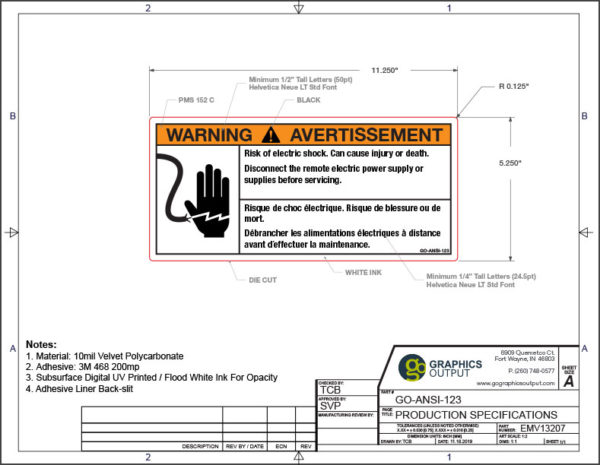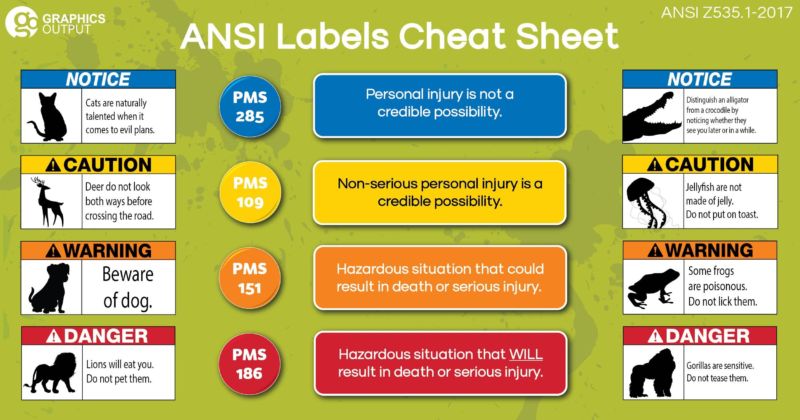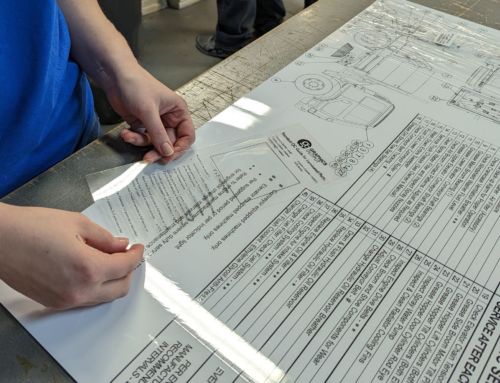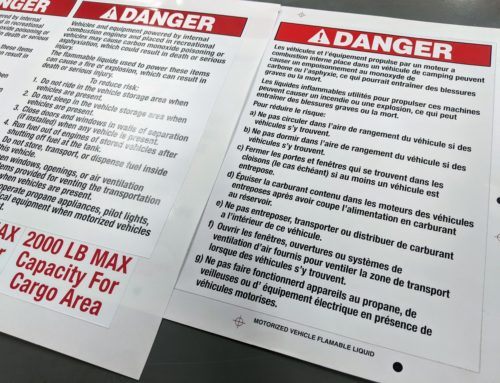Writing up specifications for engineer drawings can be a daunting task. Graphics suppliers can help with the task, but few customers recognize that complicated specs are good for only vendors and material manufacturers. The more complex a callout, the more restrictive your manufacturing options—which poses a problem if your current supplier runs into issues.

Cleaning up and simplifying specs makes them easier to understand and expand upon. Plus, cleaned-up specs are easier to substitute in times of crisis. (And haven’t we all heard “supply chain issues” enough for two lifetimes?)
Editing out the extra is easier said than done. This is how the pros do it.
Keep It Simple, Smartypants
High-level references are key when streamlining build specs for graphics. Try using generic material terms paired with performance standards.
To do this, avoid calling out manufacturers and their products by name, such as 3M, Avery, or Lexan. Instead, opt for general substrate terms (vinyl, polyester, polycarbonate) paired with finishes, textures, and colors.
In addition to these general terms, remember to include relevant performance standards:
- What type of surface will your graphic need to adhere to?
- Does this part require UV protection? If so, for how many years?
- Is there a required lifespan for your decal? And, no, “forever” doesn’t count.

Not Important? Not Included!
Why add information that isn’t relevant? For example, simple vinyl decals are usually somewhere between 2 mil (0.002”) and 5 mil (0.005”) thick, which is rarely relevant during application or end-use.
If it is important to have a 2mm cast vinyl for complex curves, skip the specifics and instead call out “cast vinyl for complex curves.”
Here’s a silly example: Think of the “No shoes, no shirt, no service” signs. Making its point doesn’t require images of steel-toe boots and a green Ralph Lauren shirt. Any old shirt and shoes will suffice.
References Available Upon Request
Referencing internal or external standards is an easy way to simplify the specs that appear on a drawing.
Internal standards include material or branding guides. These broad documents are made to cover company-wide standards. By keeping them broad, your team won’t need to update the specs for every single part if something changes.
Pro Tip: It’s good practice to add a revision level to your drawing if material or branding standards change enough to impact the art or build of that part.
External standards usually pertain to specific industries or graphic types, such as the ANSI (America National Standard for Safety Colors) Z535 Standard for safety headers/colors or the ASTM D4956 Standard Specification for Retroreflective Sheeting.

Instead of calling out each color on a safety decal, just say that all header colors must comply with ANSI Z535.1. Done. Easy.
In short, try to keep your callouts to high-level info only, omit anything non-critical, and reference internal and external standards when possible. Keeping these details simple can save you time, money, and the occasional headache. Need hands-on help? Get in touch with us at 260-748-0577 or sales@gographicsoutput.com, and we’ll help you write specifications so simple, those without a Ph.D. in print engineering will understand them.




